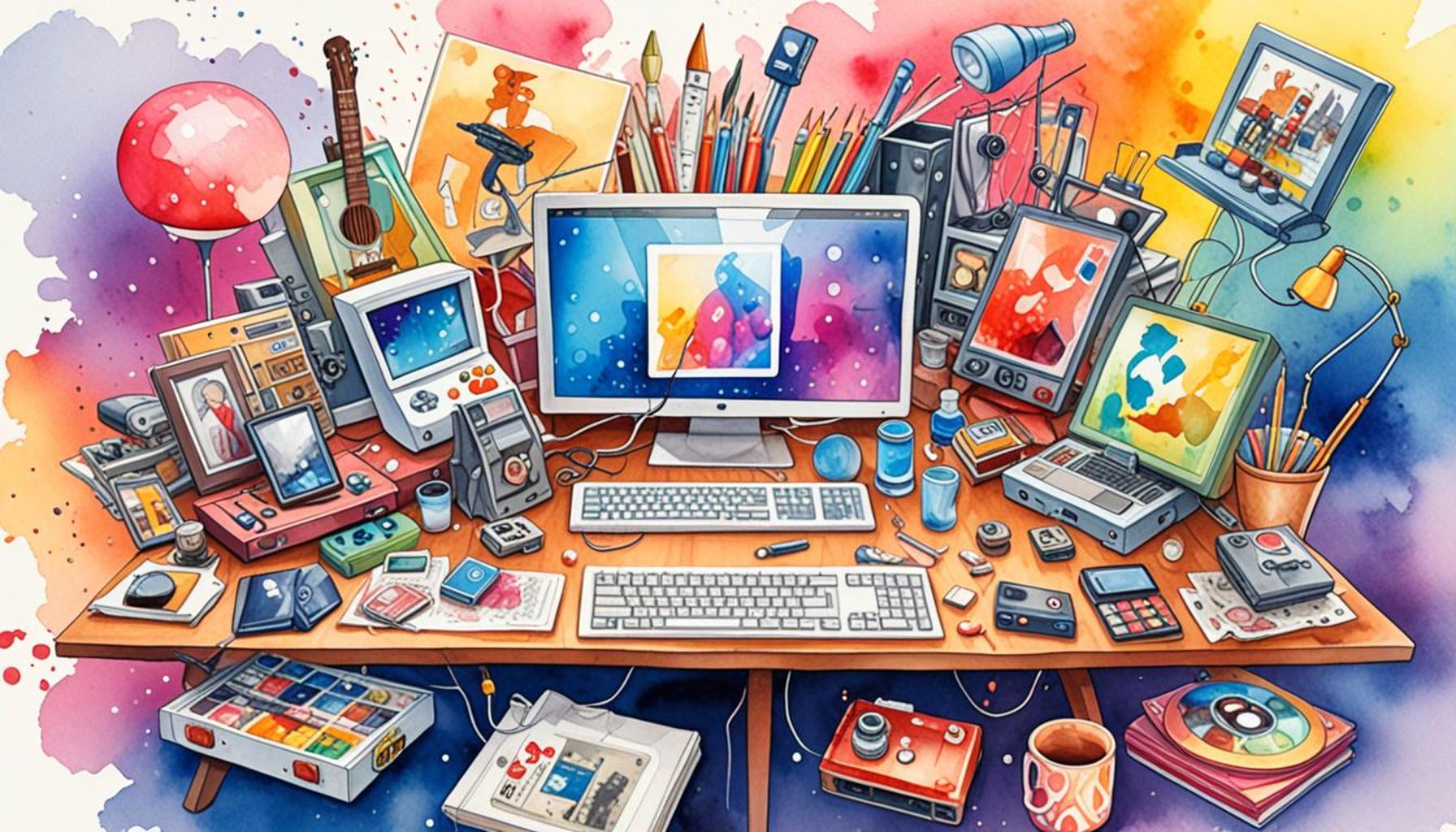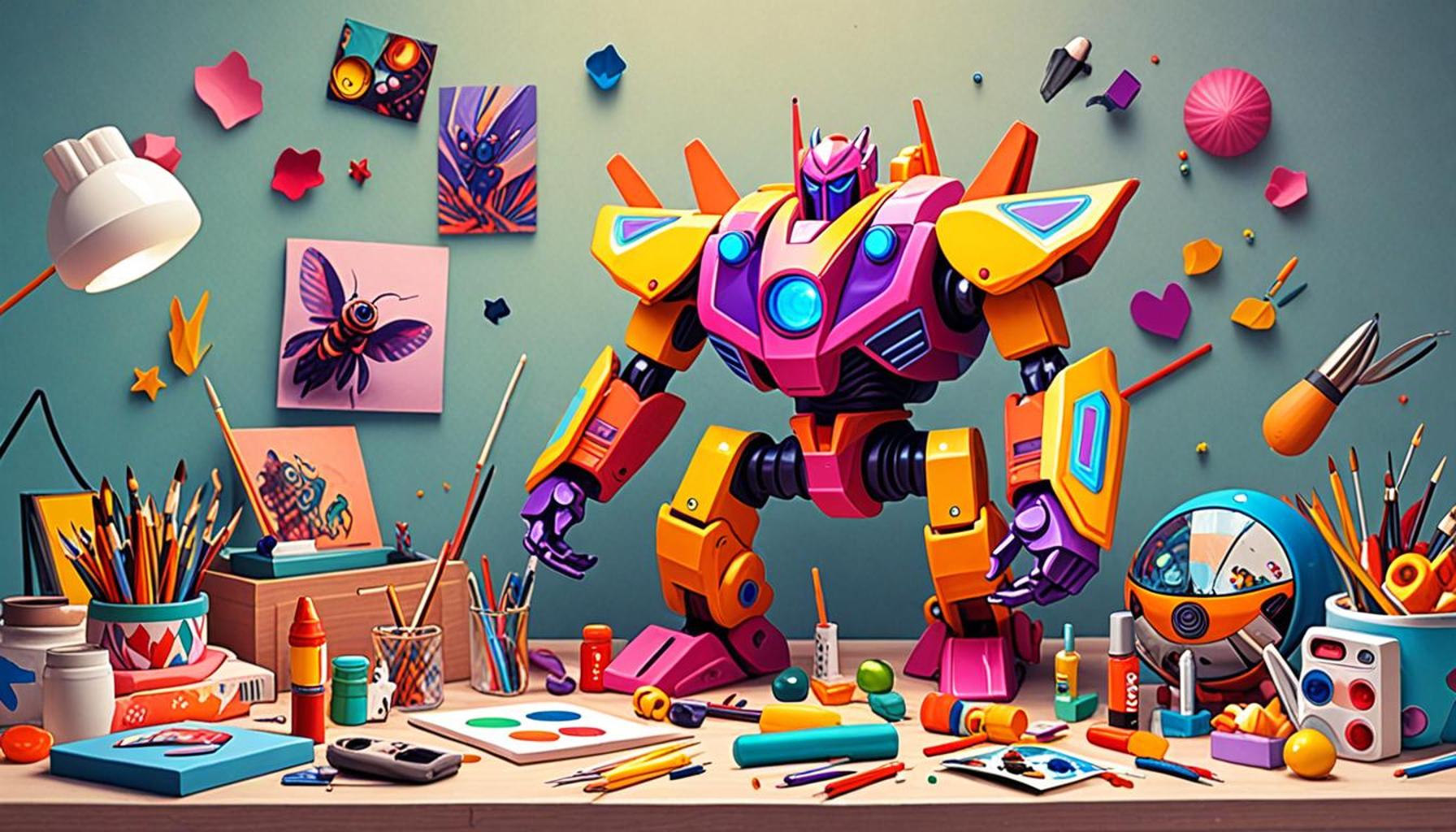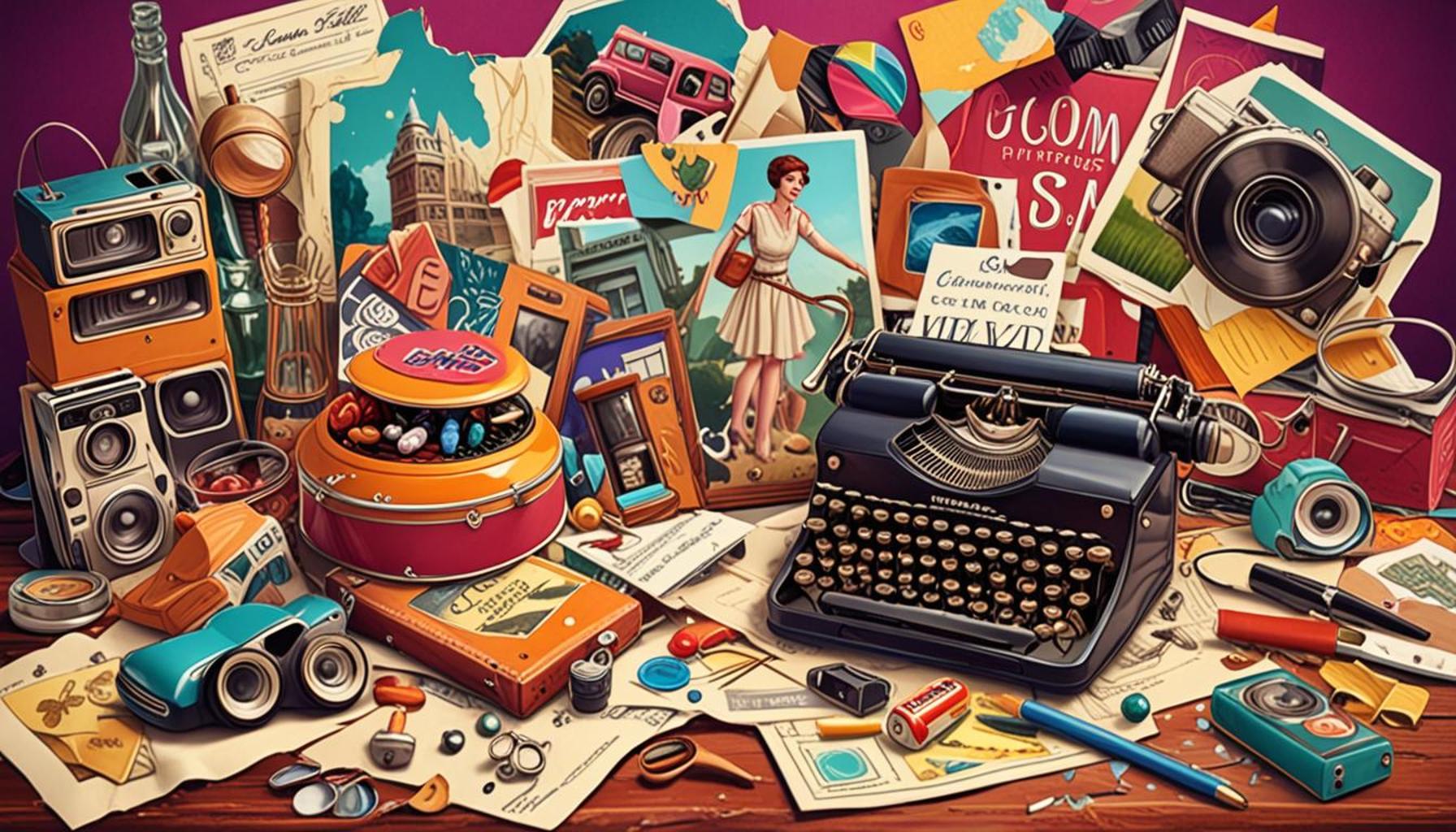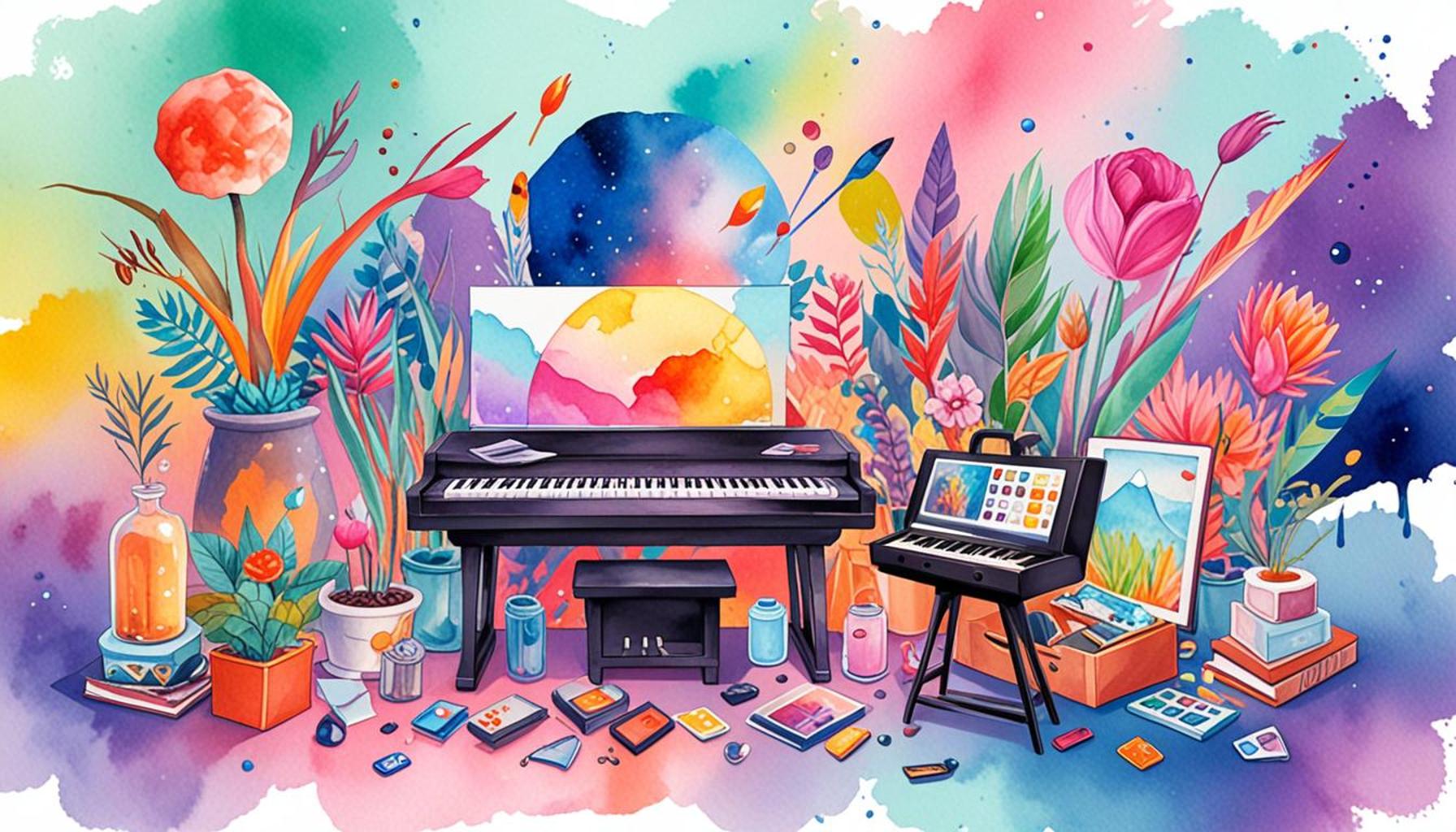The Digital Age of Collecting: How Technology is Transforming the Way We Acquire and Share Collectibles

The Transformation of Collecting in the Digital Age
The landscape of collecting has dramatically evolved over the past decade, driven largely by cutting-edge technology that has opened new horizons for collectors of all types. Gone are the days when one had to comb through local flea markets or dusty antique shops to find treasures. Today, enthusiasts can effortlessly explore and expand their collections from the comfort of their own homes, unveiling a plethora of opportunities that were previously unimaginable.
Online Marketplaces have emerged as a cornerstone of this transformation. Platforms like eBay and Etsy have revolutionized the accessibility of collectibles, offering vast selections that span the globe. For instance, a collector in New York can easily purchase a vintage comic book from a seller in California or score handmade crafts from artisans worldwide, all with just a few clicks. This digital interoperability fosters a rich community of buyers and sellers, where rare finds are only a search away.
Another major advancement reshaping the collecting landscape is Blockchain Technology. As collectors increasingly gravitate towards digital items—such as trading cards or artworks—blockchain provides an unprecedented level of security and authenticity. Platforms like OpenSea and Rarible utilize blockchain to facilitate the buying and selling of non-fungible tokens (NFTs), ensuring that each digital collectible is verified and unique. This technology not only builds trust among collectors but also elevates the perceived value of digital assets in a market that is still figuring out how to appraise them.
Social Media platforms have also played a significant role in connecting collectors. Instagram and Facebook groups offer enthusiasts a space to share their collections, exchange ideas, and initiate trades, transcending geographical boundaries. For example, a collector in a small town may find a thriving community of similar interests online, enabling collaboration and engagement that wouldn’t be possible in their local environment. These platforms provide a way to celebrate the hobby and foster friendships, turning passive collecting into an active, social experience.
Moreover, the rise of Virtual and Augmented Reality is further enhancing the experience of collecting. Virtual galleries allow collectors to examine items up close in a digital environment, enabling them to explore details that may not be visible in physical spaces. Rather than visiting an art museum in person, individuals can now experience curated exhibitions from their living rooms, providing an immersive perspective that enhances appreciation and understanding of collectibles.
As the lines between physical and digital collectibles blur, the implications for both amateur and seasoned collectors are profound. This new era offers unique opportunities such as access to rare items, the ability to verify authenticity through technology, and the convenience of connecting with a global community. However, it also presents challenges, including navigating market volatility and understanding how to value digital assets appropriately.
Join us as we delve deeper into this fascinating evolution of collecting, exploring how technology is not only transforming what we collect but also enriching our connections with one another within this vibrant community. Whether you’re a casual enthusiast or a dedicated collector, the future holds thrilling possibilities that will undoubtedly reshape the horizons of your collecting journey.
DIVE DEEPER: Click here to uncover inspiring athlete narratives
Online Marketplaces: A Gateway to Global Treasures
In the heart of this digital transformation lies the rise of online marketplaces, which have fundamentally changed how collectors discover and acquire their prized possessions. With giants like eBay, Etsy, and Discogs at the forefront, these platforms allow collectors to browse massive inventories that span countless categories, from vintage clothing to rare vinyl records. The convenience of searching for specific items means that collectors no longer need to limit themselves to their local shops, as treasures from around the globe are now just a click away.
Online marketplaces not only democratize access to collectibles but also create vibrant, dynamic ecosystems where demand can dictate supply. Buyers can follow trends, participate in auctions, or engage in direct negotiations with sellers. Here are some notable advantages of using online marketplaces for collectors:
- Expanded Access: Collectors can tap into a global network, increasing their chances of finding unique items that may not be available in their local areas.
- Diverse Offerings: From rare antiques to contemporary artworks, the variety and breadth of collectibles available online are staggering, catering to every niche interest.
- Competitive Pricing: The ability to compare prices across different sellers enables collectors to secure the best deals and help avoid overpaying.
- Detailed Descriptions and Reviews: Most platforms offer extensive item descriptions, along with user reviews that provide insight into the authenticity and condition of collectibles.
As a result, enthusiasts can engage in a more informed buying process, elevating their overall collecting experience. For instance, a contemporary art collector can easily compare prices and provenance of pieces by multiple artists, narrowing down their choices while gaining valuable insights into market values.
The Role of Blockchain in Authenticating Digital Assets
The advent of blockchain technology marks a significant milestone in the evolution of collecting, especially as digital collectibles gain traction. Non-fungible tokens (NFTs), which leverage blockchain for authenticity and ownership verification, have surged in popularity. These digital assets can represent anything from digital art and virtual real estate to gaming items and music, transforming how collectors perceive and value digital items.
Platforms such as OpenSea, Nifty Gateway, and Rarible have become popular gateways for NFT collectors, enabling purchases and sales with a level of security that traditional marketplaces cannot offer. The use of blockchain ensures that:
- Ownership Verification: Each NFT is unique and can be traced back to its original creator, providing transparency and preventing forgery.
- Smart Contracts: Transactions are executed automatically without the need for intermediaries, reducing the risk of fraud.
- Decentralization: Collectors have more control over their assets, as ownership is recorded transparently on the blockchain, allowing for seamless transfer and trade.
This technology fundamentally alters how collectors approach digital assets, enhancing legitimacy and encouraging participation in an evolving market. As collectors navigate these online spaces and blockchain advancements, their experiences become richer, creating avenues for deeper engagement with communities that share similar passions.
In this digital age, the opportunities for growth and connection are unprecedented, prompting both novice and seasoned collectors to redefine their strategies and preferences. Whether seeking physical or digital collectibles, one thing is clear: technology is not merely augmenting the collecting experience; it is reshaping the very essence of how items are valued and exchanged.
| Category | Key Features |
|---|---|
| Digital Platforms | Accessibility and global reach in purchasing collectibles. |
| Blockchain Technology | Enhanced security and transparent ownership records. |
| Social Media Integration | Facilitates community building and the sharing of collections. |
| Mobile Applications | Convenience in managing and showcasing collectibles on-the-go. |
The digital age has ushered in a revolution for collectors, empowering them with tools and technologies that expand the boundaries of traditional collecting. One of the key innovations is the rise of digital platforms which allow enthusiasts to access global marketplaces at their fingertips, making it easier than ever to buy or trade collectibles. The enhancement of blockchain technology has also transformed the landscape by offering secure and verified transactions, ensuring that ownership and provenance can be traced with precision.Moreover, social media plays a pivotal role in modern collecting. Through platforms like Instagram and Facebook, collectors can share their prized items, fostering communities where passion and knowledge are shared. Additionally, with the arrival of mobile applications, managing collections has become a seamless experience, encouraging users to engage and showcase their treasures from anywhere.As technology continues to evolve, so too does the way we think about and interact with collectibles, paving the way for new trends and opportunities that promise to enrich the collector’s journey.
DISCOVER MORE: Click here to dive deeper
Social Media: Connecting Collectors and Communities
As technology continues to reshape the landscape of collecting, social media platforms have emerged as powerful tools that foster connections among collectors, curators, and enthusiasts. Platforms like Instagram, Twitter, and TikTok serve as vibrant hubs for sharing and showcasing collectibles, allowing users to share their passion, curate their collections, and even embark on trends that redefine the collecting experience.
These digital spaces provide collectors with avenues to engage with like-minded individuals, offering opportunities to discover new items and expand their knowledge. Consider the impact of hashtags such as #collectible or #vintagefinds, which allow users to tap into a vast library of content and inspiration. Collectors can easily find and follow others who share their interests, from comic book aficionados to sneaker enthusiasts. This interconnectedness amplifies the reach of rare finds and helps establish communities around niche interests. Here are several pivotal benefits that social media brings to the collecting experience:
- Real-Time Engagement: Social media enables instant communication and feedback, allowing collectors to quickly showcase new acquisitions, receive reactions, or share experiences with their audiences.
- Access to Trends: By observing popular posts and hashtags, collectors gain insights into emerging trends in various collectible categories, helping them make informed purchasing decisions.
- Showcasing Collections: Platforms like Instagram, with their visually driven format, allow collectors to exhibit their prized items, share the stories behind them, and attract potential buyers or trade opportunities.
- Educating Peers: Many collectors utilize platforms to educate one another about the value, history, and provenance of collectibles, enriching the overall community knowledge.
This social interaction not only enhances the experience of collecting but contributes to the overall market as collectors band together, forming groups and communities that lead to exciting opportunities for collaboration and networking. Live selling events, virtual meetups, and even pop-up exhibitions organized via social media have become commonplace, further galvanizing the collector’s community in unprecedented ways.
Augmented Reality: Immersing Collectors in the Experience
Looking ahead, augmented reality (AR) is poised to revolutionize how collectors interact with their items. By overlaying digital information onto the physical world, AR technologies enhance user experiences, allowing collectors to visualize and engage with items in innovative ways. Applications and platforms increasingly incorporate AR to help collectors preview items in their environment before making a purchase. Imagine a collector of antique furniture being able to visualize how a stunning Victorian chair would look in their living room before finalizing the sale.
Major companies are already embracing AR capabilities to attract and engage customers. For instance, IKEA’s app enables users to digitally place furniture in their homes through their smartphones, empowering customers to make better-informed purchasing decisions. Similarly, auction houses and galleries are beginning to employ AR as part of exhibitions, allowing viewers to interact with artworks and collectibles from angles previously unimagined.
- Enhanced Visualization: Collectors can experience items in a three-dimensional space, offering greater confidence in buying or bidding actions.
- Virtual Collecting: AR provides unique opportunities for collectors to experience limited-edition items digitally, which can drive interest and urgency even before physical items are available.
- Interactive Experiences: Exhibits powered by AR create immersion, allowing users to learn more about the history and features of collectibles at their own pace.
Through social media and AR technologies, the digital age of collecting reflects a shift not only in how items are acquired but in how communities are formed and experiences are enhanced. As collectors navigate this rapidly evolving landscape, they are not merely amassing items; they are forging connections and creating a rich tapestry of shared experiences that transcend geographical boundaries and unite avid enthusiasts worldwide.
DISCOVER MORE: Click here to learn how to create natural shelters
Conclusion: Embracing the Future of Collecting
As we stand on the cusp of an exciting new era in the world of collectibles, the influence of technology is undeniable. The fusion of social media and augmented reality has not only transformed how collectors acquire items but has also redefined the very essence of community and shared experience in the collecting landscape. Collectors are no longer isolated enthusiasts; they are part of a dynamic, global network that encourages collaboration, exploration, and education.
The accessibility of collectibles has broadened significantly, allowing a diverse range of enthusiasts to enter the market. From vintage antiques to contemporary art and niche memorabilia, technology facilitates real-time engagement and promotes the exchange of knowledge among peers. As social platforms serve as a modern-day marketplace, collectors can share their passion and discoveries, further enhancing the vibrant culture surrounding collectibles.
Moreover, the integration of augmented reality in the collecting realm offers a glimpse into a future where collectors can engage with their desired items in immersive and interactive ways. By visualizing pieces in their own environment or experiencing them through fresh perspectives, collectors are empowered to make informed decisions and deepen their appreciation for the items they cherish.
Moving forward, it is crucial for collectors to stay adaptable and open to the evolving landscape shaped by technological advancements. By embracing these innovations, they not only enhance their own collecting experiences but also contribute to the thriving ecosystem that unites enthusiasts across vast distances. In this digital age, collecting transcends mere acquisition; it becomes a journey filled with connection, exploration, and wonder. For those willing to navigate this ever-changing terrain, the world of collectibles holds promise beyond imagination.


